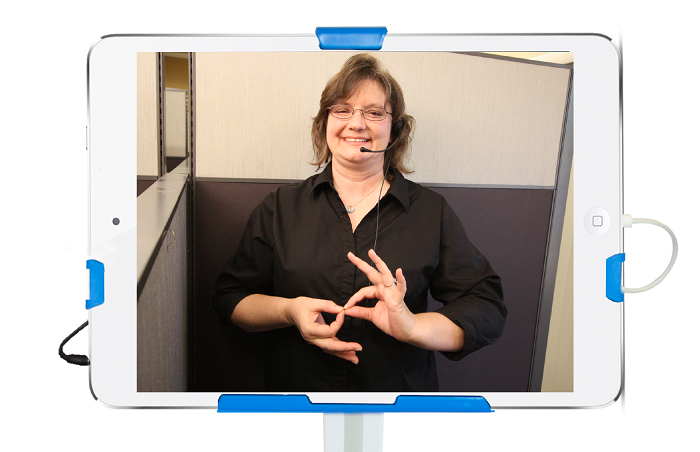
Language services leaders with experience in a healthcare setting understand that treating patients who are Deaf or Hard of Hearing comes with challenges. Our clients have confirmed that many Deaf patients hold strong preferences about the way they receive interpretation, requesting that an in-person American Sign Language (ASL) be used for every interaction.
Our clients are largely in agreement that, while they strive to accommodate patient preference, considerations like department budgets and time constraints make offering an on-site interpreter for every encounter impractical. Hospitals and health systems have come to appreciate the convenience and cost-effectiveness of video interpretation (VRI) when treating both Deaf and Hard of Hearing patients and those with limited-English proficiency (LEP).
We recommend a few VRI best practices designed to provide patients a pleasant experience:
1. Select and Allocate VRI Equipment Carefully
The right equipment can impact patient experience with VRI, particularly for Deaf patients who communicate visually using ASL. Whether you choose a pre-built VRI equipment solution offered by a language services provider or decide to assemble your own, consider:
Screen size sufficient for the video interpreter’s hand signs to be easily readable at distance
Integrated camera and speakers which capture clear video of the patient signing and allow providers to clearly hear the interpreter’s words
Portability such that the VRI equipment can easily move through the hospital with the patient
Built-in security and charging capabilities to ensure the unit is available and functioning when needed
Once you have the equipment, placement plays a significant role in whether the technology improves the patient experience. We recommend placing at least one unit in the Emergency Department for quick access, with more available in high-usage areas. Designating a staff member such as a nurse manager to keep track of the equipment’s location can help ensure it’s available when needed.
2. Implement VRI with Purpose and Set Expectations
Like any new technology, introducing VRI (or a new VRI provider) into your organization will work better if it includes training. We recommend providing guidance to staff on how to operate the new equipment, and our implementation team routinely provides training materials to help new clients come on board.
It’s also best practice to set expectations for when your team will use different methods of interpretation. If your organization staffs in-house interpreters, in what scenarios do you expect them to be used? When should staff call an agency for an outside on-site interpreter? In what cases should they default to VRI? Providing clear guidance up front helps prevent confusion and ensure a consistent patient experience.
3. Utilize VRI in Ways That Maximizes Effectiveness and Patient Comfort
VRI’s effectiveness depends in part on how well providers use it. Providers should:
- Position the VRI unit in front of the patient so they can see the screen, and so that the device camera captures the patient’s image from the waist up
- Stand just behind and to the right of the screen, so that the provider and patient are still positioned to have a conversation
- Maximize the viewing window on the VRI device to create the largest possible image
Patient comfort is also a key component. The better patients feel about the device initially, the more likely they are to experience it positively throughout their care. We recommend that when a Deaf or Hard of Hearing patient is hospitalized, you:
- Place the VRI cart/equipment in the patient’s room prior to taking the patient there, and leave the cart for the entirety of their stay
- Explain that VRI is there for the patient 24/7 and show them how it works
Want to learn more about deaf communication and providing care for Deaf and Hard of Hearing patients via video interpretation?




